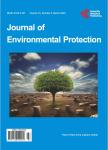The Use of SF<sub>6</sub>and GIS to Study Farfield Modeling of Ocean Outfall Plumes in Florida
The Use of SF<sub>6</sub>and GIS to Study Farfield Modeling of Ocean Outfall Plumes in Florida作者机构:Applied Research Center (ARC) Florida International University Miami FL USA Atlantic Oceanographic and Meteorological Laboratory Ocean Chemistry Division Miami FL USA Florida Atlantic University Civil Engineering Department Boca Raton FL USA
出 版 物:《Journal of Environmental Protection》 (环境保护(英文))
年 卷 期:2014年第5卷第11期
页 面:1037-1052页
学科分类:1002[医学-临床医学] 100214[医学-肿瘤学] 10[医学]
主 题:Ocean Outfall Treated Sewage Effluent Disposal Farfield Modeling Sulfur Hexafluoride
摘 要:In June, 2004 and February, 2007, in field tracer studies were conducted on the Hollywood and South Central outfalls, using sulfur hexafluoride (SF6) as a tracer. The objective of these studies was to determine if the tracer could be detected in the farfield at significant distance, and if so, could this data be used to construct a model of the farfield plume. Prior models for farfield plume movement do not appear to comport well with the conditions in southeast Florida. Extensive research was conducted in southeast Florida on 4 outfalls, which led to the development of nearfield dilution equations for same. However farfield modeling of outfall plumes was difficult to accomplish because the tracers used are not detectable for significant distances. The SF6 resolved that problem and as a result the Hollywood outfall was used to construct a model. Two methods were investigated for modeling the plume, 1) the Eureqa formulation method and 2) the Gamma-Curve method. The concentrations in the x-y plane were first found by using the Eureqa formulation to calculate the concentration at each grid point given its depth and the concentration of the centerline at the same latitude. The plume models were generated using MATLAB that matched with the results actually seen in the field.



